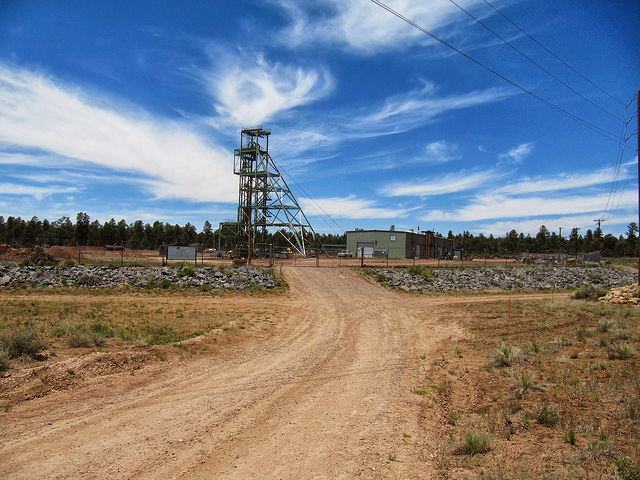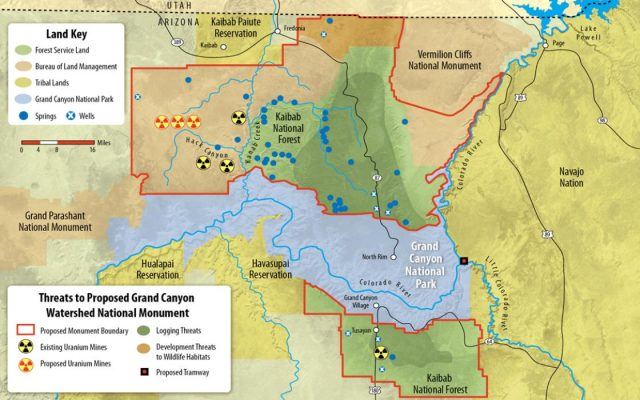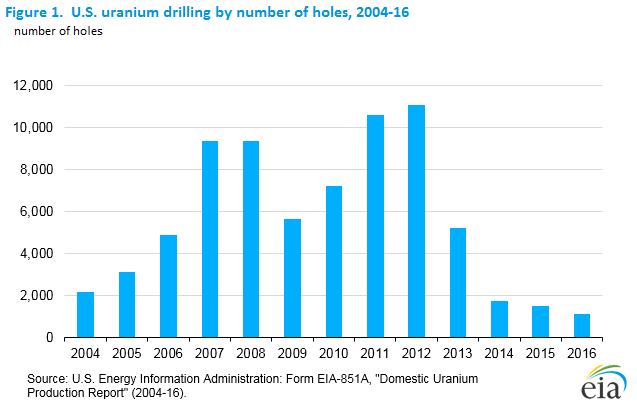
The US Forest Service recently submitted a report (PDF) to the Trump administration, suggesting that an Obama-era order could be revised to allow uranium mining on National Forest land, reopening old tensions in an area that sustains tribal interests, mining operations, and outdoor activities.
The report was submitted in response to a March presidential order requiring all agencies to review their body of rules, policies, and guidelines pertaining to energy development in the United States. Agencies were directed to provide the White House with a list of items that might weigh down the development of domestic energy resources “with particular attention to oil, natural gas, coal, and nuclear energy resources,” according to the Forest Service, which is an agency within the US Department of Agriculture (USDA).
The Forest Service ultimately outlined 15 agency rules, regulations, and agreements that could be rescinded or modified to favor fossil fuel or nuclear energy. Many of the recommendations involved revisions to existing paperwork or fee schedules that the Forest Service imposes on energy companies seeking to do business in National Forest land. One item suggested that the Forest Service exclude low-risk energy projects on national land from “unnecessary and possibly time consuming environmental assessments.” Another suggested a revision of how energy projects are assessed in sage-grouse habitat. The wild bird’s habitat has been a political sticking point for fossil fuel advocates and environmental advocates alike.

The recommendation to review uranium mining rules could reverse 2012’s Order 7787, which withdrew one million acres of land in the Grand Canyon Watershed area from new mining activities for a period of 20 years (operations on existing claims were allowed to continue). The order intended to protect the water resources in the area from pollution resulting from uranium exploration and mining. Courthouse News notes that the Havasupai Tribe, who live in the protected area, have fought against uranium mining due to concerns about water source contamination.
Uranium is used in nuclear energy generation. Nuclear energy has become increasingly costly in the US—according to recent numbers from asset management firm Lazard (PDF), it’s one of the few widely used energy sources that has become more expensive in recent years. Energy companies and utilities have been eager to step away from plans to build nuclear plants in the US as prices have risen, and the recent bankruptcy of nuclear reactor builder Westinghouse called the futures of two partially complete nuclear plants into question.

According to the World Nuclear Association, most of the uranium mined in the US comes from Wyoming, as well as a location in Nebraska. Energy Information Agency data shows that in 2016, mines in the US produced 2.5 million pounds of uranium. In 2015, uranium mining company Energy Fuels estimated that “Canyon Mine, six miles from the South Rim of the Grand Canyon, holds 1.63 million pounds of uranium,” according to Cronkite News. Other potential mines in the area could hold more.
But the cost of nuclear energy today could stymie uranium mining whether the Grand Canyon Watershed is open for mining or not. The global price of uranium has fallen consistently since reaching a high in 2011.
reader comments
106